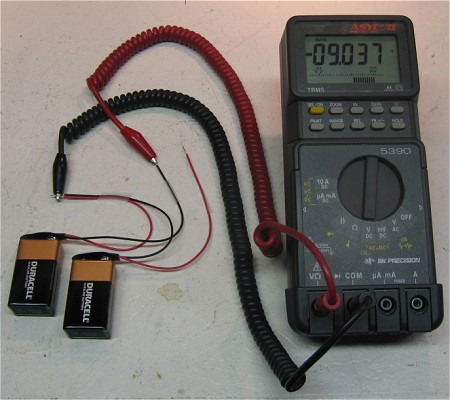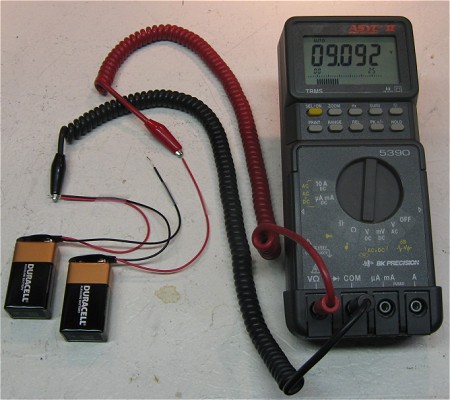Ray Wilson authored this content while he was actively running MFOS as the founder and resident genius.
We retain the content because it reflects a valuable point of view representing that time and place.
Article by Ray Wilson
|
To make a plus and minus 9 volt supply you can use two nine volt batteries.
Of course this is if your circuit optimally draws less than about 20 mA.
Otherwise you will be going through batteries really fast and it's probably time
to step up to a wall wart or line powered supply.
NEWBIES BEWARE! Unless you know what you are doing with line supplies stick to batteries. Line powered supplies are dangerous to you and others unless you know how to safely build them. As you can see below you take a black lead from one of the battery connectors and pair it with the red lead of the other battery connector. This junction becomes the circuit ground. Now one of the batteries supplies the positive 9 VDC voltage (from it's red lead) and the other one provides the -9 VDC voltage (from it's black lead). You can see this in the photos below where a meter is connected with it's black or common lead clipped to the junction of the red and black leads of the battery connectors and the meter's red lead is used to measure the voltage between this "ground" and each of the other battery terminals. The voltage on the red battery connector wire measures 9.092 VDC and the voltage on the black battery connector wire measures -9.037 VDC. Hey why aren't they exactly 9.0V and -9.0V? Because of variations in the battery manufacturing process. Often, in electronics, you will find that values of components or voltages are slightly higher or lower than the ideal but it's OK... everything still seems to work. Alkaline batteries provide more energy density (can provide higher current and last longer) than carbon zinc batteries.
|
 |
| Measuring -9 VDC on the negative side of the battery supply. | Measuring +9 VDC on the positive side of the battery supply. |

|

|